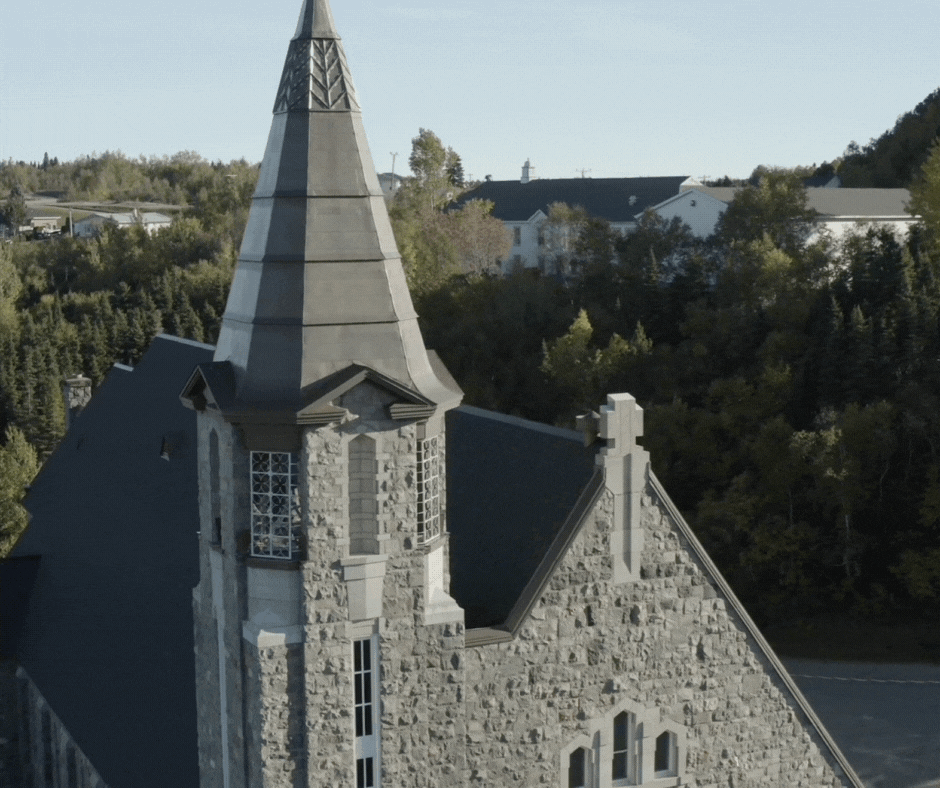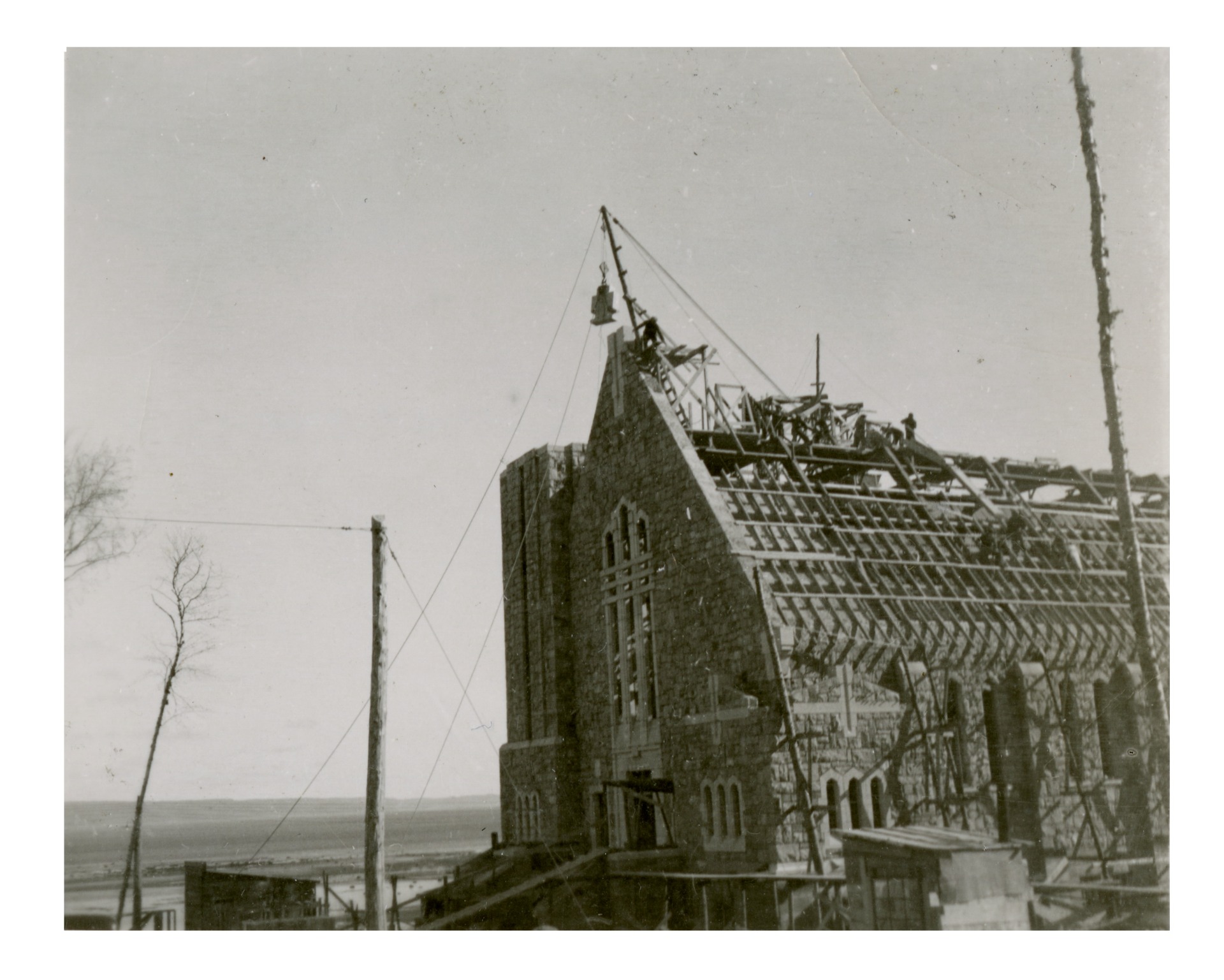
A bustling worksite
Once architect Gaston Gagnier had finalised the plans and specifications, construction work could begin. On June 5, 1939, tenders were opened and the contract was awarded to Georges Dubé, an entrepreneur from Rimouski.
Construction began on June 20. The rumble of heavy machinery and explosions of dynamite became the backdrop of daily life. A steel frame 53 metres long and 18 metres wide was rapidly erected on the existing foundations.
If you were to look at the church under construction from above, you could already see that it was shaped like an iconic symbol of Christianity. Can you guess which one?

It is a cross consisting of the main part of the building with the intersecting side sections forming the arms.

Within days after work began, the walls could start being erected on the hardened concrete. The majority of the stone used came from the church site itself. A stone cross was placed on the façade on October 18, 1939.

On November 29, the roof was finished and plastering began in January 1940. The church was finally ready to welcome its first parishioners on June 1, 1940.
Ultimately, its construction cost the tidy sum of $114,000, which works out to be several million in today’s dollars.